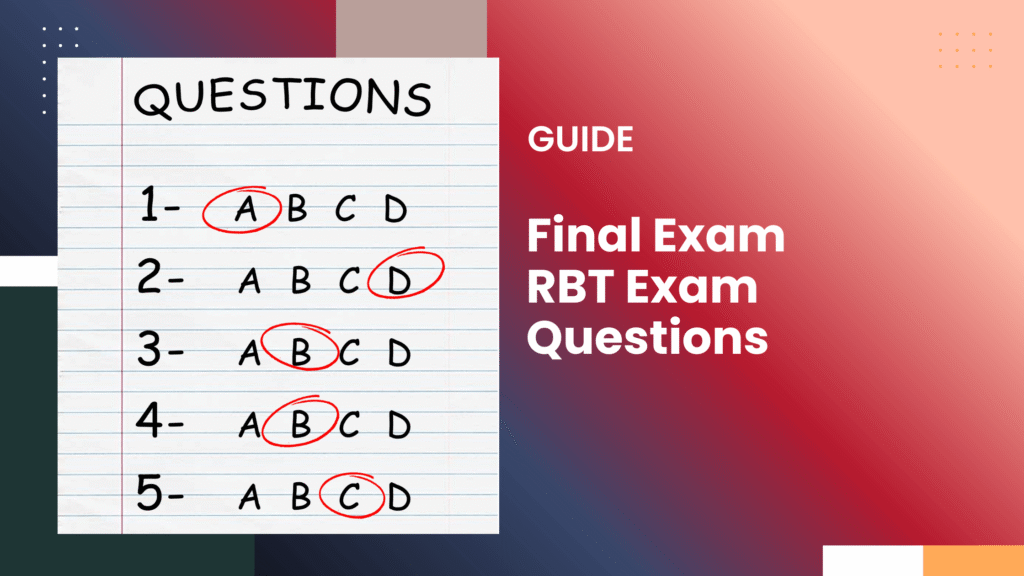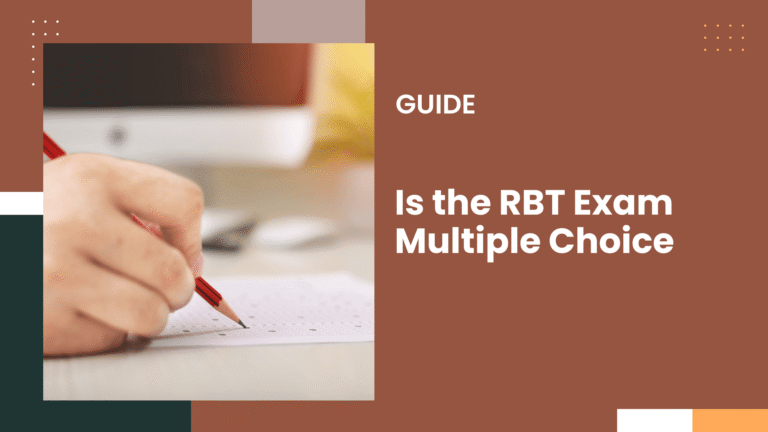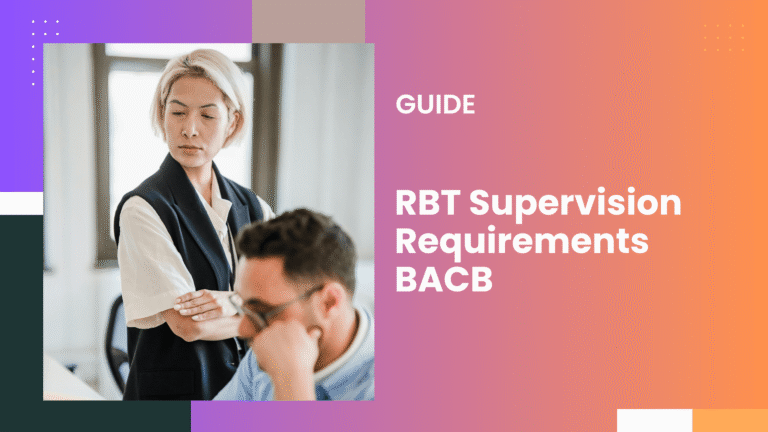Final Exam RBT Exam Questions | 15 Practice Questions

Take the Final Exam RBT Exam Questions with 15 free practice questions covering all 6 RBT task areas. Boost your confidence and master the exam format. Start practicing now and ace the test.
Final Exam RBT Eam Questions
Question 1 |
Increase the intensity of prompts immediately | |
Pause the session and document refusal | |
Use a least-to-most prompting hierarchy while maintaining reinforcement schedule | |
Remove materials and return later |
Question 2 |
Record each instance as separate data points | |
Count as one occurrence due to close timing | |
Tally as three occurrences with precise timestamps | |
Estimate duration instead of frequency |
Question 3 |
Force compliance with the schedule | |
Fade in the schedule using pairing with preferred items | |
Ignore the behavior and continue | |
Ask the supervisor to change the plan |
Question 4 |
Record the skill as mastered | |
Collect data in both settings to verify generalization | |
Ignore the home setting data | |
Reduce expectations at the clinic |
Question 5 |
While implementing an extinction procedure for attention-seeking behavior, the learner begins to cry softly. What is the correct response?
Comfort the learner briefly | |
Maintain extinction unless distress becomes unsafe | |
Switch to reinforcement immediately | |
End the session to reduce stress |
Question 6 |
Use a free-operant preference assessment | |
Block escape until assessment is done | |
Switch to forced-choice only | |
Delay until later in the day |
Question 7 |
During baseline data collection, the learner suddenly begins to display dangerous aggression. What is the first action?
Continue to collect data accurately | |
Ignore unless repeated | |
End the session and leave | |
Implement safety procedures immediately |
Question 8 |
Increase reinforcement for correct responses | |
Implement differential reinforcement of non-echoic responses | |
Repeat the instruction louder | |
Switch to non-verbal prompts |
Question 9 |
Use your own interpretation | |
Ask for clarification before continuing data collection | |
Continue with current understanding and report later | |
Skip data collection until updated |
Question 10 |
Reintroduce prompts at a previous successful level | |
Stop training and wait a week | |
Use only verbal prompts | |
Ignore regression to avoid dependency |
|
List |
I built this exam test with one goal: to give you real, free RBT exam questions that actually help.






